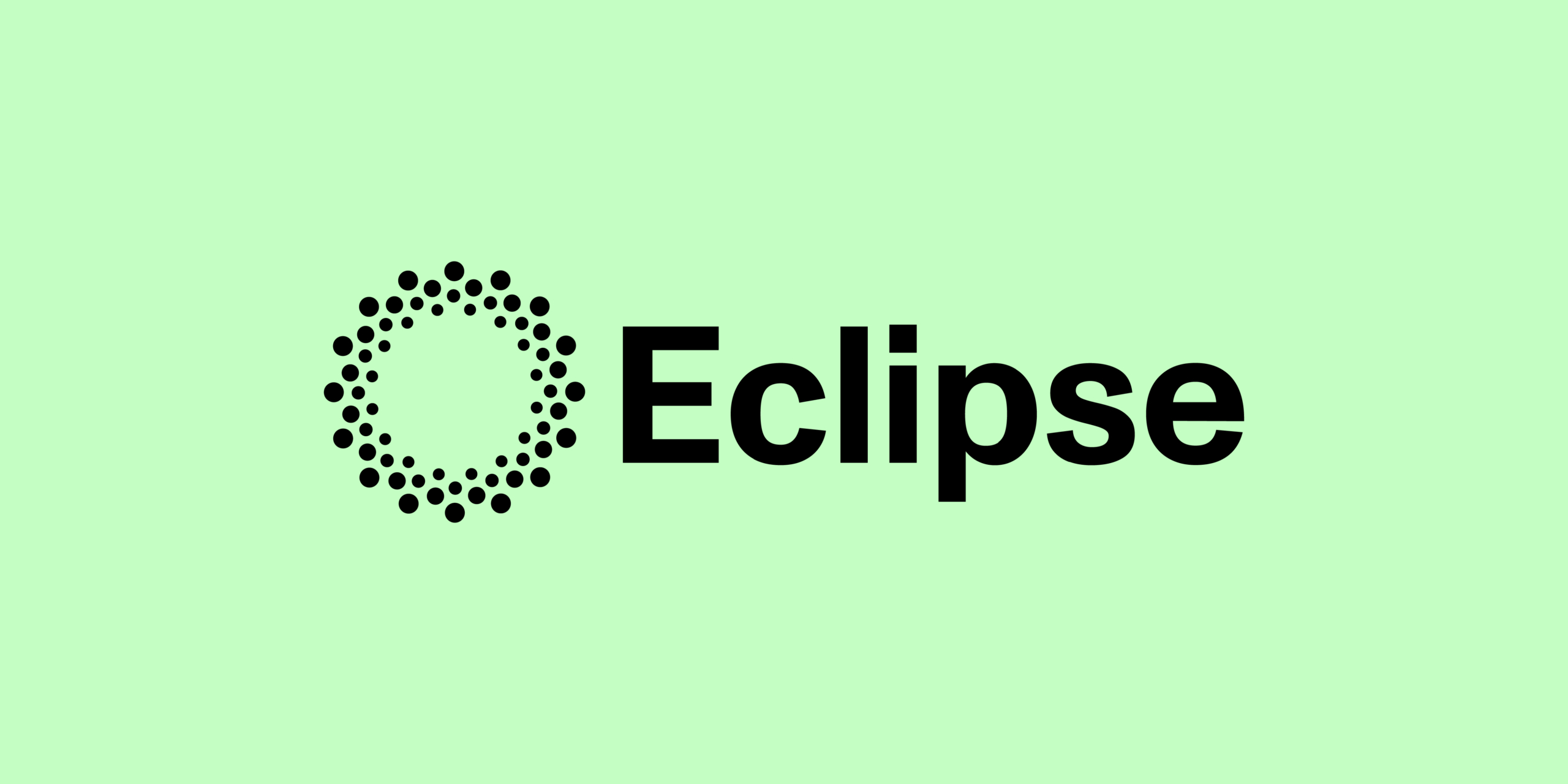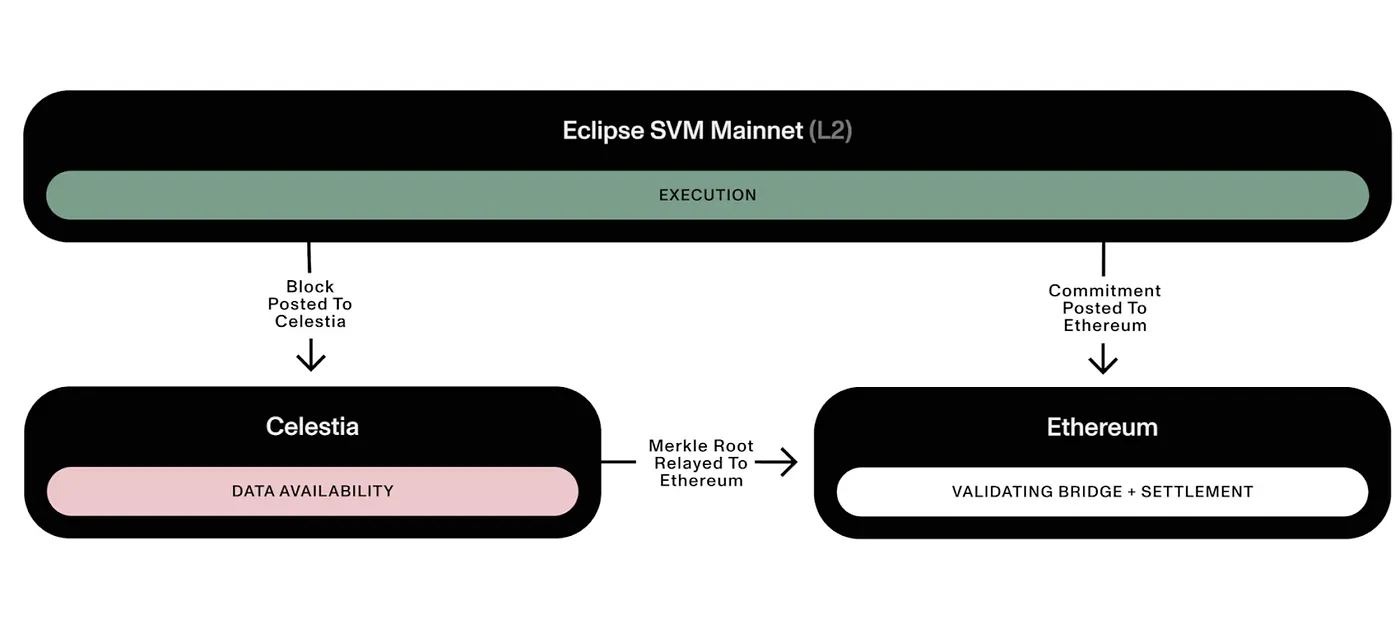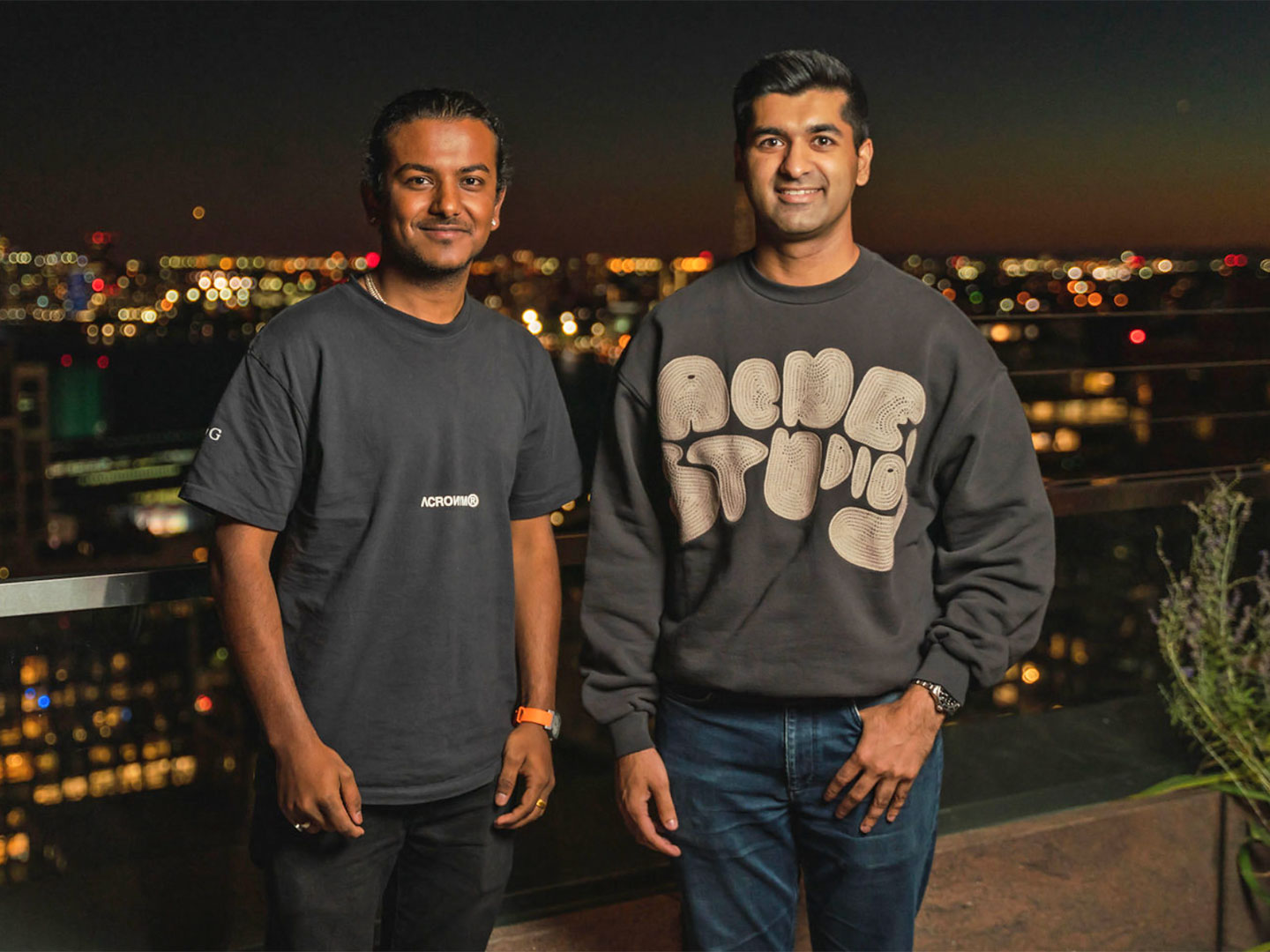Deep Diving Into Eclipse.
 Shivank Kapur
Shivank KapurTable of contents

TL;DR
Eclipse Mainnet is Ethereum's first general-purpose L2 based on the SVM.
Eclipse will employ an embedded Ethereum verification bridge to settle on the platform, consume ETH for gas, and provide Ethereum fraud proofs.
In 2022, Solana-based firm Eclipse was created by Neel Somani, a former software engineer at Airbnb and quantitative researcher at Citadel.
Introduction
Based on the official explanation, the following is stated: With the intention of being the quickest and most widely used Layer2 powered by SVM, Eclipse Mainnet is Ethereum's first general-purpose L2 based on the SVM. It combines the essential elements of a modular stack. The architecture of the project uses RISC Zero to generate zero-knowledge fraud proofs, Celestia as the data availability layer, Ethereum as the settlement layer with an official embedded verification bridge, and Solana's SVM as the execution environment for this modular Layer 2 project. The official description is used to describe the details below -
Ethereum Settlement Layer: Eclipse will employ an embedded Ethereum verification bridge to settle on the platform, consume ETH for gas, and provide Ethereum fraud proofs.
Execution Layer: Eclipse's execution environment is a high-performance Solana Virtual Machine (SVM), which is a fork of the Solana Labs client (v1.17);
Data Availability Layer — Celestia: To provide scalable data availability (DA), Eclipse will publish data to Celestia;
RISC Zero will be used by Eclipse as the proving mechanism for ZK fraud proofs, negating the necessity for intermediate state serialisation;
Communication Protocol — IBC: Eclipse will finish bridging with chains that are not Eclipse via the Inter-Blockchain Communication standard (IBC) developed by Cosmos;
Hyperlane and Eclipse work together to bring Hyperlane's permissionless interoperability solution to blockchains built on the Solana Virtual Machine using the Cross-Chain Protocol.
Working of Eclipse

Settlement Layer: Obtaining Ethereum's Security and Liquidity
Eclipse employs Ethereum as its settlement layer, just like other Ethereum Rollups. In order to give users Ethereum-level security, this procedure entails incorporating Eclipse's verification bridge directly into Eclipse, where its nodes must verify the accuracy of the verification bridge and the proper transaction ordering.
In order to avoid requiring users to rely on the integrity of Layer2 validators to guarantee the security of their money, L2BEAT defines Layer2 as "chains that derive their security fully or partially from Ethereum's first layer." In some failure cases, the Eclipse verification bridge can perform both censorship resistance and final validity. Users can still push through their transactions across the bridge and burn even in the event that the sequencer goes down or starts censoring on L2.
Execution Layer: Reaching the Transaction Scale and Speed of Solana
Using SVM and Sealevel (Solana's technology solution for constructing horizontal scalability, a super-parallel transaction processing engine for horizontal scaling across GPUs and SSDs), the Eclipse Mainnet employs Solana's execution environment to increase efficiency. Its advantage over the EVM's single-threaded operation is that it can run transactions in a way that avoids constructing overlapping state operations, as opposed to sequentially processing them.
With regard to EVM compatibility, the Eclipse Mainnet works with Neon EVM to enable developers to create Web3 applications on Solana and utilise Ethereum tools. Its throughput, which may reach up to 140 TPS, is far higher than that of a single-threaded EVM, according to official data. With the plugin of Metamask’s Wallet users of EVM can natively communicate with apps on the Eclipse Mainnet.
Data Availability: Making Use of Celestia's Verifiability and Bandwidth
Even with the EIP-4844 upgrade, which offers an average of roughly 0.375 MB of Blobs space per block (with a per block limit of approximately 0.75 MB), Ethereum is currently unable to support Eclipse's target throughput and cost. As a result, Eclipse Mainnet will use Celestia for data availability and to establish a long-term collaboration. Official data indicates that the total TPS for all Rollups for ERC-20 transactions based on Rollup scaling, calculated at 154 bytes per transaction, is roughly 213 TPS, while the total TPS for Compression Swaps, calculated at roughly 400 bytes per transaction, is roughly 82 TPS. On the other hand, Blobstream is anticipated to reach 8MB from Celestia's 2MB blocks as the network proof stabilises and more DAS (Data Availability Sampling) light nodes come up.
Given the trade-off between highly scalable DA throughput and cryptographic economic security, Eclipse considers that Celestia is the best option for the Eclipse Mainnet at this time thanks to the support of its DAS lite nodes. Although there is a belief that employing Ethereum's DA is the conventional approach for Layer 2, the project will keep track of the development of DA expansion following EIP-4844. The potential to switch to Ethereum's DA will be reevaluated if Ethereum is able to offer Eclipse DA that is more expansive in scope and has a higher throughput.
RISC Zero Fraud Proofs (Without Intermediate State Serialisation) is the proof mechanism.
Eclipse's proof technique is comparable to Anatoly's SVM fraud proof SIMD, which is in line with John Adler's observation that state serialisation comes at a hefty cost. Early attempts were made to inject a Sparse Merkle Tree into the SVM in order to prevent reintroducing a Merkle tree (hash tree) into the system; however, updating the Merkle tree with each transaction significantly affected performance. Existing generic Rollup frameworks (such the OP stack) cannot be the basis for an SVM Rollup without utilising a Merkle tree for proofs, which calls for a more inventive fault proof architecture.
Requirements for fault proofing include the transaction itself, the input commitment made during the transaction, and evidence that re-executing the transaction will produce an output that differs from what is specified on the chain.
The standard method for fulfilling input promises is to supply a Merkle root of the Rollup state tree. In order to enable any full node to follow up, extract input accounts from their own state, compute output accounts, and verify the Ethereum commitments are accurate, Eclipse's executor will publish a list of inputs and outputs for each transaction (including account hashes and related global states), the transaction index that generated each input, and publish transactions to Celestia.
Founding Story

In 2022, Solana-based firm Eclipse was created by Neel Somani, a former software engineer at Airbnb and quantitative researcher at Citadel. Anatoly Yakovenko, a co-founder of Solana, as well as organisations and people like Polygon (creating Rollup blockchains that work with both Solana and Polygon) supported the firm. A CoinDesk post from September 28, 2022 states that Eclipse has raised $15 million in funding through the successful completion of two funding rounds: a $6 million Pre-Seed round headed by Polychain and a $9 million Seed round co-led by Tabiya and Tribe Capital. Furthermore, the Solana Foundation awarded Eclipse a development grant to enable the Solana Virtual Machine-driven Rollup.
Founder Somani effectively used Solana's virtual machine to establish a unique blockchain by utilising his network and the geographic benefit of being close to the company's headquarters in Chicago. In early 2023, he intends to establish a public testnet within the Cosmos ecosystem with the goal of enabling developers to construct Rollups powered by the Solana Virtual Machine. He also aims to support Aptos's Move language in the future. Co-founder of Solana and Eclipse angel investor Anatoly Yakovenko said, "Solana can now communicate with Cosmos via Inter-Blockchain Communication (IBC) thanks to Eclipse."
"As large corporations and governments begin to enter the blockchain space, Eclipse serves as crucial infrastructure facilitating their use cases, such as consumer and financial applications on blockchain," said Niraj Pant, a partner at Polychain Capital.
Summary
Eclipse, the first SVM Layer2 on Ethereum, is presently in the early phases of development and testing. The mainnet launch was scheduled for Q1 2024, however the testnet was also operational. Rollups are a fundamental component of Ethereum's development roadmap. Putting aside the controversy around orthodoxy, this implies that Ethereum has delegated some degree of control over the definition of Layer 2 to the market, so empowering users while also quietly offering a range of competitive opportunities. Eclipse takes use of this by fusing Solana's high performance, Ethereum's security, and Celestia's DA storytelling through modular development for a compelling market narrative.
When considering Ethereum's history, it's interesting to note that during the most recent market cycle, driven by the excitement around DeFi Summer, there was a sharp increase in "DeFi nesting" and "DeFi Legos" inventions and intensifications, which resulted in an ecosystem that developed explosively. This round witnessed a spike in "staking nesting" and "staking Legos" combinations due to the combination of LSD and Re-staking; EigenLayer, Blast, and the BTC ecosystem's Merlin quickly increased TVL. If Legos and nesting are the primary themes of market emotion, modularity will eventually be able to sing its own special Legos and nesting tune.
FAQs
Q) Why did Eclipse choose Celestia DA over Solana’s DA?
Ans) Celestia is purpose-built for data availability, meaning that many convenience features already exist. If we were to use Solana, there is various surrounding infrastructure that we would have to build ourselves (for example, relayers from Solana to Eth L1) or data availability sampling (DAS). Because Celestia already has DAS, users can directly verify the blocks are not being withheld.
Q) Why did Eclipse choose Solana VM?
Ans) The Solana (Sealevel) virtual machine is a highly parallelized runtime that is constantly improving. For EVM blockchains such as Ethereum or Optimism, at any given point there is only a single program running. (This is called "single-threaded.") For the Solana VM, if you have multiple cores, you can run several programs at the exact same time, substantially increasing throughput. Moreover, the execution layer continues to improve:
Seahorse Lang lets you write Solana VM programs in Python.
Q) Does Eclipse Mainnet have its own token?
Ans) No, ETH is the native token for Eclipse Mainnet. ETH is used to pay for gas.
Subscribe to my newsletter
Read articles from Shivank Kapur directly inside your inbox. Subscribe to the newsletter, and don't miss out.
Written by

Shivank Kapur
Shivank Kapur
I'm a FullStack Developer currently working with Technologies like MERN Stack, BlockChain, GraphQL, Next.js, LLMs, and a plethora of other cutting-edge tools. I'm working as a Developer Relations Engineering intern at Router Protocol and also as a Contributor at SuperteamDAO. My journey also encompasses past experiences at Push Protocol, where I orchestrated seamless community management strategies. I help Communities by Bridging the Gap between Developers and Clients. Crafting, launching, and meticulously documenting products fuel my passion, infusing every endeavor with purpose and precision. Beyond the binary, I find solace in the pages of self-help and spirituality, honing both mind and spirit with each turn of the page. phewww... I love a cup of coffee ☕ while writing code. So let's connect and have a meet over something you wanna discuss. I'll be more than happy to have it. Drop me a line at shivankkapur2004@gmail.com